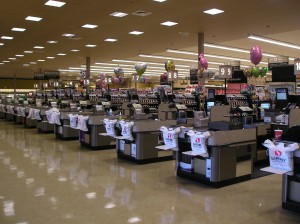On an overcast evening, a young man walked into a grocery store, the red “S” of the store’s logo a glimmering reflection on the slightly wet pavement. The young man knew what he came for – milk, 1%, 4L – and preferably with a later expiry date. He had been through this routine before, many times in fact, that he wouldn’t have given it another thought. Until he saw … it.
There, slightly obstructing his way to the milk, was a sign: ‘Buy 3 boxes of Post cereal and get a 4L milk free’. The young man briefly pondered this – ‘how much am I saving?’, ‘do I need cereal?’ – and the answer was a resounding ‘YES!’ The young man said to himself: “saving $4 on $18of cereal and milk is like saving 25%, and cereal is non-perishable, plus, I have milk to go with it!”
After the young man left the store, he thought: “What a genius promotional strategy, using an item which people regularly buy to attract them to an associated item.” After glancing at an economics textbook lying astray in the passenger seat of his car, he said to himself: “Wow! They even used the economic principle of complement goods: decreasing the price of a complement good increases the demand for the other – milk and cereal in this case.” Now the young man was on a marketing tangent: “They even used product placement – putting different types of Post cereal on the shelf so I would obviously choose three different types whereby learning about the brand more.” “And what’s more”, the young man went on, “they targeted a product that has little brand differentiation – I couldn’t care less about the brand of cereal I ate!”
He thought: “What next, free bread with purchase of Smucker’s jam?”


Robin, I’ve been waiting for more posts from you… This one was fun to read, so why not write some more before the end of term?!
What do you think about the recent posts. Specifically the most recent one on channel partners?